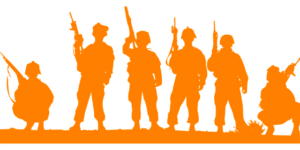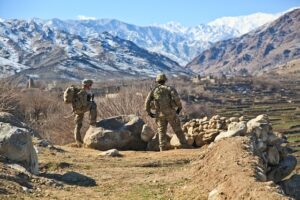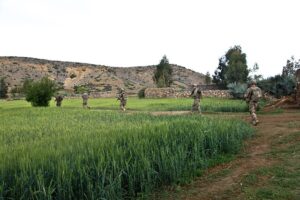
The US Army Flag, historically known as the "Colonial Colors," is a symbol steeped in American military history, originating from the Continental Army's early flags in the Revolutionary War and officially adopted by the Second Continental Congress on July 4, 1777. The flag features seven red and white horizontal stripes and a blue field with thirteen white stars, representing the fight for independence. Over time, it has been updated to include additional stars for new states. This flag has a long history of being flown during significant battles and is a representation of national pride, military heritage, and the enduring values upheld by US Army soldiers. Today, it remains a testament to their resilience and valor. The embroidered US Army Flag also serves as a visual identifier for units, enhancing cohesion and operational efficiency on the battlefield with its durable and recognizable badges, which are emblematic of each unit's history, traditions, and accomplishments. The flag is a symbol of regimental identity, with designs that reflect both the practical requirements and the rich cultural heritage of the armed forces, and is overseen by the US Army's Institute of Heraldry to ensure its consistent representation across all branches and units. This oversight maintains the uniformity and professionalism of the military emblems, which are integral for identity recognition, unit cohesion, and operational efficiency in modern military applications.
The rich tapestry of the United States Army’s history is intricately woven into its uniforms and equipment, with the US Army Flag standing as a testament to valor, tradition, and national pride. This article explores the evolution, symbolism, and significance of the flag as embroidered onto military attire and gear, providing a historical perspective that underscores its importance over time. We delve into the role embroidery plays in enhancing the identity and function of military uniforms and equipment, and examine modern applications and regulations governing their use. Join us as we stitch together the narrative of this enduring symbol within the fabric of America’s military legacy.
- The Evolution of the US Army Flag: Symbolism and Significance
- The Role of Embroidery in Military Uniforms and Equipment
- Historical Perspectives on the Embroidered US Army Flag
- Modern Applications and Regulations of Embroidered Motifs on US Army Uniforms and Equipment
The Evolution of the US Army Flag: Symbolism and Significance
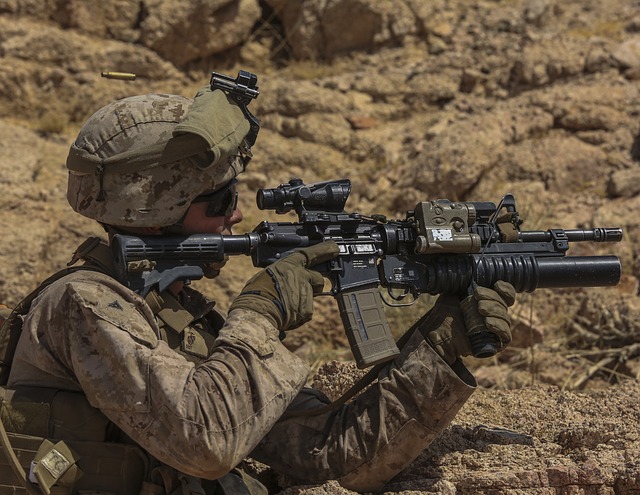
The US Army Flag, also known as the “Colonial Colors,” has a rich history that intertwines with the evolution of American military identity. Originating from the early flags of the Continental Army during the Revolutionary War, this emblem has undergone significant changes over time to reflect the nation’s growth and the Army’s values. The original flag was a symbol of rebellion against British rule, featuring seven red and white horizontal stripes with a blue field in the upper left corner bearing thirteen white stars. This design, adopted by the Second Continental Congress on July 4, 1777, laid the foundation for what would become an enduring representation of American military might.
As the United States expanded and evolved, so too did the US Army Flag. The addition of new stars for each new state joined the Union saw repeated alterations to the flag’s design. By the late 19th century, the flag included 34 stars, reflecting the number of states in the Union at that time. The flag was flown during significant battles and military campaigns, becoming a beacon of national pride and a reminder of the soldiers’ connection to their home states. Today, the US Army Flag is a powerful emblem of the nation’s heritage, the resilience of its service members, and the principles they uphold. It serves as a testament to the enduring spirit of American soldiers and the shared history they represent. The flag, often embroidered onto uniforms and equipment, remains an important symbol within the US Army, carrying with it the weight of tradition and the promise of valor in every campaign that follows.
The Role of Embroidery in Military Uniforms and Equipment
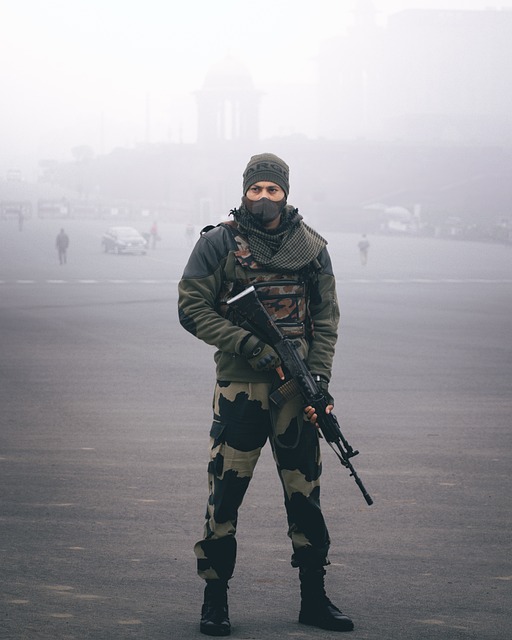
Embroidery has played a significant role in military traditions, serving as a visual symbol of rank, unit identity, and national pride. The US Army Flag, with its intricate embroidery, is a prime example of how embroidered insignia can convey the hierarchy and cohesion within the armed forces. These flags and their embroidered badges are not mere decorations; they are essential tools for maintaining order and unity on the battlefield. The precise stitching of the US Army Flag ensures that it is easily recognizable from a distance, which is crucial for both morale and operational efficiency. The embroidery stands up to harsh conditions, remaining legible and identifiable even when exposed to the elements or after extended use. It is through this durable form of identification that units can be swiftly identified, facilitating coordinated efforts and clear communication among personnel.
Furthermore, the embroidered insignia on military uniforms and equipment are a testament to the rich history and traditions of the US Army. These symbols have evolved over time but continue to represent the values and achievements of the soldiers who bear them. The embroidery not only aids in the organization’s internal structure but also serves as a silent narrative of the unit’s lineage, battles fought, and victories won. The skillful use of embroidery on military regalia is a nod to the artisanal craftsmanship that has been an integral part of military culture for centuries. It is this blend of practicality and tradition that gives the US Army Flag its enduring significance within the armed forces.
Historical Perspectives on the Embroidered US Army Flag
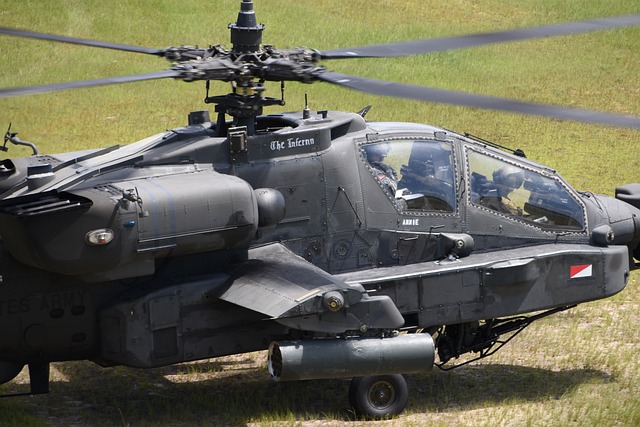
The embroidered U.S. Army Flag, a symbol of regimental identity and pride within the United States military, has a storied history that dates back to the early 19th century. Initially, these flags were hand-stitched by regimental members or their families, often incorporating local traditions and skills into the design. As a testament to the craftsmanship of the era, these flags were not merely passive symbols but active representations of each unit’s heritage, values, and experiences on the battlefield. Over time, the design standards for the U.S. Army Flag evolved, leading to a more uniform appearance while maintaining the unique characteristics that distinguished one regiment from another. These flags have adorned the uniforms and equipment of American soldiers in numerous conflicts, serving as a visual link between past and present service members, and ensuring that the legacy and history of each unit are carried forward with every campaign and deployment.
Today, the U.S. Army Flag remains an emblem of distinction and honor. It is embroidered onto uniforms and displayed on equipment to signify the unit’s lineage and the collective achievements of its soldiers. The flag’s design, which typically includes regimental insignia, a motto, and battle honors, tells a story of bravery, sacrifice, and commitment. Each stitch in the embroidered U.S. Army Flag represents a chapter in the Army’s storied history, serving as a constant reminder of the values that soldiers strive to uphold. The flag’s presence on uniforms and equipment is not merely decorative but symbolic, fostering esprit de corps and a shared sense of identity among the troops who carry it with pride into battle.
Modern Applications and Regulations of Embroidered Motifs on US Army Uniforms and Equipment
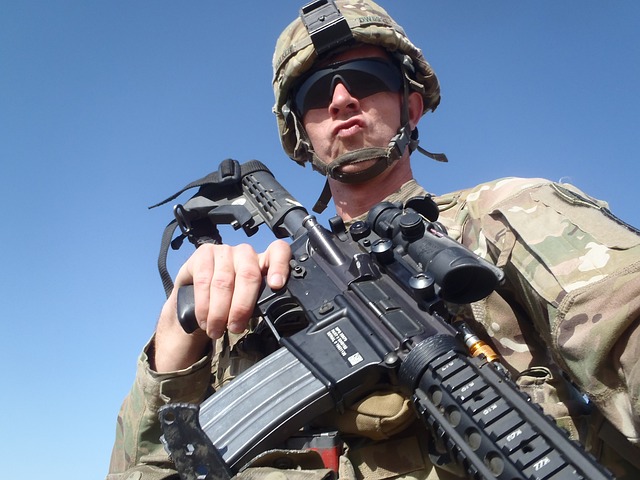
The integration of embroidered motifs, including the US Army Flag, into modern military uniforms and equipment serves a multifaceted purpose within the United States Army. These emblems are not merely decorative; they play a crucial role in identity recognition, unit cohesion, and operational efficiency. With advancements in textile technology and sublimation techniques, these motifs have evolved to be more durable and versatile, ensuring visibility across various environmental conditions. The US Army Flag, as a symbol of pride and affiliation, is embroidered onto uniforms and equipment to instantly convey unit identification and chain of command hierarchy. This visual cue is invaluable on the battlefield, enhancing situational awareness and fostering a sense of belonging among troops.
Regulations governing the use of such embroidered motifs are stringent and specific to maintain uniformity and operational effectiveness. The Army’s Institute of Heraldry (IOH) is responsible for the design and regulation of all official military insignia, including the US Army Flag. These regulations dictate not only the placement and appearance of emblems but also their materials and construction methods to withstand the rigors of military service. The IOH’s meticulous oversight ensures that each embroidered motif adheres to the highest standards, reflecting both the history and honor of the US Army. This regulatory framework is essential for maintaining a professional and cohesive appearance across all branches and units, reinforcing discipline and order within the military’s vast operational network.
The US Army Flag, with its rich tapestry of symbolism and history, has long served as a visual testament to the values and traditions of the United States Army. From its early incarnations to its modern representations, the flag’s embroidered motifs have evolved, reflecting both the changing face of military uniforms and the enduring importance of such symbols in representing unit identity and cohesion. As this article has explored, the role of embroidery within the military is multifaceted—serving not only as a badge of honor but also as a means of fostering esprit de corps among service members. The historical perspectives provided offer insight into the flag’s significance and its adaptations over time, while contemporary regulations ensure that these emblems remain both meaningful and appropriately standardized. In conclusion, the US Army Flag remains an integral part of the military’s heritage and a symbol that continues to inspire and unite those who serve.
